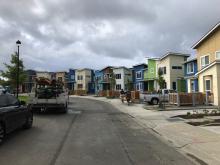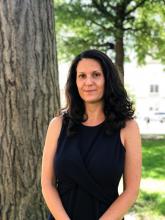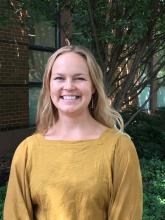These essays set a geographic context for the volume’s discussion of mixed-income communities, exploring questions such as: Where do mixed-income communities exist and what are their characteristics? What are the trends where mixed-income communities are emerging in metro areas? What effects do mixed-income communities have on the areas around them? Some essays in this group focus on inclusionary housing in low-poverty neighborhoods as a promising area in which to sharpen strategies for creating inclusive, equitable mixed-income communities.
The Essays
- Spatial Context: The Geography of Mixed-Income Neighborhoods
- Attainability and Stability of Mixed-Income Neighborhoods
- Mixed-Income LIHTC Developments in Chicago: A First Look at their Income Characteristics and Spillover Effects
- High-Opportunity Partner Engagement: Creating Low-Income Housing Options Near Good Schools
- The MTO Fund: Harnessing the Market to Promote Opportunity and Inclusion
- Mixed-Income Housing in New York City: Achievements, Challenges and Lessons of an Enduring Mayoral Commitment
- Beyond Counting Units: Maximizing the Social Outcomes of lnclusionary Housing
Spatial realities, challenges and opportunities
These first three essays begin to expand our understanding of the geographic context and trends of mixed-income housing and communities. They also bring to light a core dilemma in the field: how to define “mixed-income” community. Each essay takes a different approach, underscoring the importance of further debate about how best to characterize and measure mixed-income neighborhoods.
In “Spatial Context: The Geography of Mixed-Income Neighborhoods,” Elizabeth Kneebone, Carolina Reid, and Natalie Holmes present an analysis of the nation’s 100 largest metropolitan areas to help paint a broader picture of “naturally occurring” mixed-income neighborhoods. They find that about 10 percent of the census tracts in the largest metropolitan areas meet their definition of naturally occurring mixed-income neighborhoods, far fewer than the substantial proportions that are predominantly high- or low-income neighborhoods. A promising finding is that there were nearly 1,400 more mixed-income neighborhoods in 2016 than in 2000 in the nation’s major metro areas. These tracts seemed to offer more equitable access for residents from historically marginalized populations. However, the authors also document considerable “churn” as mixed-income neighborhoods shift into high- or low-income status, as well as “stickiness” among those neighborhoods that are predominantly high- or low-income. They identify metro areas that have a higher-than-average share of stably mixed-income neighborhoods and call for a closer exploration of the policy and contextual factors that could explain this outcome.
In “Attainability of Mixed-Income Neighborhoods,” Elizabeth Luther, Noah Urban, Stephanie Quesnelle, and Ayana Rubio explore the existence of dense, stable mixed-income neighborhoods in eight major metro areas that share characteristics with their home city of Detroit, MI. Using their own definition of “mixed-income,” which incorporates a measure of resident and job density, they find a very small percentage—only one percent—of tracts in these eight, generally weaker market metro areas, qualify as mixed-income. They conclude that it is incredibly difficult for neighborhoods in large metropolitan areas to achieve the mix and density criteria they established, although those neighborhoods that achieve the criteria appear more likely to retain these characteristics over time. Because the few dense, mixed-income neighborhoods in these metro areas exhibit profiles that are relatively distinct from each other, reflecting their respective regions’ economic and demographic trends more than similarities to each other, they suggest that the most pragmatic policies to support dense, mixed-income, stable neighborhoods must be highly localized.
Turning from naturally occurring mixed-income neighborhoods to planned development, “Mixed-Income LIHTC Developments in Chicago: A First Look at Their Income Characteristics and Spillover Effects,” by Raphael Bostic, Andrew Jakabovics, Richard Voith, and Sean Zielenbach, examines the Low-Income Housing Tax Credit (LIHTC) program, widely considered the most successful federal affordable housing program. Although to date LIHTC has not had the explicit aim of promoting an income mix, almost a quarter of LIHTC projects nationwide include a mix of subsidized and market-rate units. This essay presents an analysis of the characteristics and effects of mixed-income LIHTC projects in Chicago. The authors find that tenant incomes in LIHTC properties tend to be somewhat higher in gentrifying and more affluent neighborhoods than in persistently poor communities, and thus “mixed-income” LIHTC developments are not bringing much socio-economic diversity and affluence to low-income communities. They also find that while LIHTC properties in general have had positive effects on surrounding home prices, “mixed-income” LIHTC properties have more of an effect in strong neighborhoods than in weak neighborhoods. This leads them to call careful attention to the trade-offs facing LIHTC developers that seek to promote greater equity and inclusion and to recommend a focus on mixed-income neighborhoods, rather than mixed-income housing, by investing in fully-subsidized LIHTC projects housing in strong neighborhoods.
Together, these three essays establish the elusiveness and complexity of achieving and sustaining mixed-income housing and neighborhoods. They reinforce the imperative of closer attention to the nuances of geographic trends in neighborhoods, across metro areas, to examine factors that may yield a more stable mix. They set a high bar for the level of sophistication and intentionality that will be required to counter the prevailing forces that promote economic and racial segregation. The distribution, availability, form, and management of rental housing stand out as a common strategic theme across these essays and thus an invitation for deeper consideration by other essays in this volume.
Spatial Context: The Geography of Mixed-Income Neighborhoods
- Elizabeth Kneebone, Terner Center for Housing Innovation, UC Berkeley
- Carolina Reid, Terner Center for Housing Innovation, UC Berkeley
- Natalie Holmes, UC Berkeley
Elizabeth Kneebone is Research Director at the Terner Center for Housing Innovation at U.C. Berkeley, and a nonresident senior fellow at the Brookings Institution's Metropolitan Policy Program. Her research interests include the shifting geography of poverty in the U.S. and the ways in which the built environment shapes access to opportunity. She is co-author of the book Confronting Suburban Poverty in America (Brookings Press, 2013). Elizabeth holds a master's degree in public policy from the University of Chicago and a bachelor's degree in history from Indiana University.
Carolina Reid is an Assistant Professor in the Department of City and Regional Planning and the Faculty Research Advisor at the Terner Center for Housing Innovation. Carolina specializes in housing and community development, with a specific focus on place-based anti-poverty strategies including policies to expand access to affordable housing and homeownership for low-income and minority households, the Community Reinvestment Act, and neighborhood stabilization.
Natalie Holmes is a PhD student at UC Berkeley's Goldman School of Public Policy. Previously, she worked at the Brookings Institution's Metropolitan Policy Program, where her work focused on the geography of poverty in the U.S., and policies and programs to support low-wage workers and families. She holds a BA from Yale College and an MPP from Georgetown University
Attainability and Stability of Mixed-Income Neighborhoods
- Elizabeth Luther, Capital Impact Partners
- Noah Urban, Data Driven Detroit
- Stephanie Quesnelle, Data Driven Detroit
- Ayana Rubio, Data Driven Detroit
Elizabeth Luther directs Capital Impact Partners’ Detroit Program, leading its programmatic, policy, and research agenda in the city. The Program focuses on ensuring Detroit residents have access to the reinvestment activity taking place in their neighborhoods and the city as a whole. Most recently, Elizabeth developed and launched the Equitable Development Initiative – an innovative program to support real estate developers of color investing in the city through training, technical assistance, and financing.
Noah Urban is Data Driven Detroit’s Senior Analyst, tasked with managing projects, coordinating the analytical team, writing reports and blogs, and disseminating data and information. He has led projects with diverse partners including Microsoft Corporation, the U.S. Department of Health and Human Services, The Kresge Foundation, Forgotten Harvest, and Capital Impact Partners. Noah’s past research efforts have focused on neighborhood change, understanding property conditions, and support mechanisms for local data intermediaries. He currently sits on the Executive Committee for the National Neighborhood Indicators Partnership.
Stephanie Quesnelle is a Research Analyst at Data Driven Detroit, with a specialty on developing quantitative models to analyze data for projects. Prior to joining D3, she worked in a wide-range of analyst roles, including automotive marketing, the Department of Defense, think tanks, and academic research. Her research endeavors have included unemployment insurance programs, process improvements, mental health, early childhood development, incarceration of at-risk populations, and neighborhood change.
Ayana Rubio is a Data Analyst at Data Driven Detroit, with a background in environmental research. At D3, Ayana provides mapping, GIS, and data support, and conducts much of the organization’s health-focused research and data analysis.
Mixed-Income LIHTC Developments in Chicago: A First Look at their Income Characteristics and Spillover Effects
- Raphael Bostic, Federal Reserve Bank of Atlanta
- Andrew Jakabovics, Enterprise Community Partners
- Richard Voith, Econsult Solutions
- Sean Zielenbach, SZ Consulting
Dr. Raphael W. Bostic is president and chief executive officer of the Federal Reserve Bank of Atlanta. He is a participant on the Federal Open Market Committee, the monetary policymaking body of the Federal Reserve System.
Andrew Jakabovics is vice president, policy development at Enterprise Community Partners, where he oversees the Policy Development & Research team, researching issues related to affordable housing, housing and community development, housing finance, foreclosures and neighborhood stabilization, and broader housing supply and demand concerns. He has also been analyzing small multifamily properties, neighborhood change, and the demographics and socioeconomics of renter households in the United States. Prior to joining Enterprise, he served as senior policy advisor at the U.S. Department of Housing and Urban Development and as associate director for Housing and Economics at the Center for American Progress.
Richard Voith, PhD is President of Econsult Solutions Inc. (ESI), an economic consulting firm focusing on urban issues. Dr. Voith is also a Research Fellow at the University of Pennsylvania Institute for Urban Research. He has published widely on transportation, real estate, and economic development issues in scholarly journals and in the popular press. Dr. Voith’s consulting efforts have focused a range urban issues including the impacts of Hope VI housing on nearby neighborhoods, the impacts of transit systems on economic development, and the evolving role of technology in cities.
Sean Zielenbach, Ph.D., is the president of SZ Consulting, a firm focused on community economic development throughout the country. He works with a variety of loan funds, banks, public agencies, and nonprofits on issues relating to affordable housing, development finance, poverty alleviation, and neighborhood revitalization. He focuses primarily on strategic planning, program and product development, and impact measurement. He has conducted multiple studies on the effects of various housing, commercial, and community facility initiatives in catalyzing neighborhood change.
Inclusion and Equity in “Opportunity” Areas
This pair of essays explores housing acquisition models that promote affordability, equity, and inclusion for low-income families in “opportunity neighborhoods”—places with strong resources, especially high-performing schools. The approaches described here largely circumvent opposition to locating affordable housing in affluent, predominantly white communities by purchasing existing housing rather than constructing new units. And, motivated by recent research on how housing mobility affects young children, the models also focus on boosting educational outcomes for children in low-income families.
In High-Opportunity Partner Engagement: Creating Low-Income Housing Options Near Good Schools, Peter Kye and Megan Haberle of Poverty & Race Research Action Council and Laura Abernathy and Scott Kline of the National Housing Trust (NHT) provide an overview of the acquisition model. The authors highlight four such efforts around the United States before looking more deeply at NHT’s HOPE model, featuring preliminary lessons from its first pilot acquisition project in Coon Rapids, MN.
In The MTO Fund: Harnessing the Market to Promote Opportunity and Inclusion, Hans Buder, the Founder of The MTO Fund, presents the case for an innovative approach to designing and financing a housing acquisition model. He and his partners have carefully crafted a comprehensive approach with high-touch mobility counseling, social services, community building, and crisis intervention while promising a market-rate return to investors. This model offers the possibility of groundbreaking scalability in the inclusionary housing arena.
Both essays exhort policymakers, developers, and investors to consider accelerating the proof-of-concept phase of this compelling approach.
High-Opportunity Partner Engagement: Creating Low-Income Housing Options Near Good Schools
- Peter Kye, Poverty & Race Research Action Council
- Megan Haberle, Poverty & Race Research Action Council
- Laura Abernathy, National Housing Trust
- Scott Kline, National Housing Trust
Peter Kye is a Law and Policy Associate at PRRAC focusing on housing and environmental justice issues. Mr. Kye earned his J.D. from the University of Virginia School of Law in 2016. During law school, he received the Mortimer Caplin Public Service Award and interned at the Legal Aid Justice Center, Community Legal Services of Philadelphia, and the New York Legal Assistance Group. Mr. Kye received his B.A. from the College of William & Mary in 2013, where he studied Government and Sociology. He is a member of the New York State Bar.
Megan Haberle is Deputy Director of the Poverty & Race Research Action Council, where she has worked since 2012. She specializes in policy designs, public education, and technical assistance relating to government programs and civil rights, with a focus on advancing fair housing and environmental justice. She is a graduate of Columbia Law School, where she was an Executive Editor of the Columbia Journal of Environmental Law, and Swarthmore College, where she studied anthropology.
Laura Abernathy joined the National Housing Trust in 2010 and currently serves as the State and Local Policy Director. In this role, Laura oversees the Trust’s work on state and local public policy initiatives in all 50 states, working with elected officials, government employees, and advocates from around the country to shape public policy that promotes local affordable housing preservation, strengthens communities, and provides access to opportunity for low-income families. Laura holds a B.A. in Economics and English Literature from Franklin & Marshall College and a Master’s degree in Urban and Regional Planning from the University of Florida, where she specialized in Housing, Community, and Economic Development.
Scott L. Kline is Vice President of the National Housing Trust and Senior Vice President of NHT Communities. Scott oversees a team of developers and asset managers responsible for acquisition efforts throughout the United States on behalf of NHT Communities which involves identifying preservation opportunities, negotiating site control with owners, developing project concepts and finance plans, coordinating due diligence processes, securing financing, and the asset management of acquired properties. Scott earned an M.B.A. in Real Estate Development and Urban Planning, from American University, Washington, D.C. and also holds a B.B.A in Finance, from George Washington University, Washington, D.C.
The MTO Fund: Harnessing the Market to Promote Opportunity and Inclusion
- Hans Buder, The Moving to Opportunity Fund
Hans Buder is the founder of the Moving to Opportunity Fund, prior to dedicating himself to the Fund full time, Hans was a project manager at McCormack Baron Salazar, Hans’ responsibilities included underwriting new tax credit developments across the country and helping to manage the transformation of the Alice Griffith public housing project in San Francisco into a mixed-income community through the HUD Choice Neighborhoods Program. Prior to his work there, Hans served as Associate Director of Acquisitions at Long Wharf Capital, a Boston-based real estate private equity firm (and the former private real estate arm of Fidelity Investments), where he closed on real estate acquisitions with a total capitalization in excess of $350 million. Hans holds an MBA from the Stanford Graduate School of Business, a Masters in Public Administration from the Harvard Kennedy School of Government, and a Bachelor of Arts from Duke University.
Investing in New York’s Future
In “Mixed-Income Housing in New York City: Achievements, Challenges, and Lessons of an Enduring Mayoral Commitment,” Alex Schwartz and Sasha Tsenkova provide a detailed review of New York City’s extensive and exceptional efforts to create mixed-income housing. Spanning multiple mayoral administrations, New York City has been the site of ambitious efforts to create affordable housing in the midst of booming real estate market conditions which have threatened to displace major swaths of the low- and moderate-income population. Schwartz and Tsenkova make the case that mixed-income housing in New York City is notable not only due to its scale—almost 300,000 affordable units created or started in inclusionary housing projects during the past two mayoral administrations—but also its location, often in middle-class and affluent areas, and the broad economic mix of its residents. While they contend that New York City is the site of “more creative, ambitious, and durable approaches to mixed-income housing than anywhere else in the U.S.,” they also draw many lessons and cautionary insights from the New York experience and share implications for mixed-income policy and practice throughout the country.
Mixed-Income Housing in New York City: Achievements, Challenges and Lessons of an Enduring Mayoral Commitment
- Alex F. Schwartz, The New School
- Sasha Tsenkova, University of Calgary
Alex Schwartz is a Professor of Public and Urban Policy at the New School. He is the author of Housing Policy in the United States: 3rd Edition (Routledge, 2014) and co-author of Policy Analysis as Problem Solving: A Flexible and Evidence-Based Framework (Routledge 2019). His research has appeared in such journals as Cityscape, Economic Development Quarterly, Housing Policy Debate, Housing Studies, International Journal of Urban and Regional Research, Journal of the American Planning Association, and Journal of Urban Affairs. In addition, he is the Managing Editor for North America for the international journal Housing Studies.
Dr. Sasha Tsenkova holds a PhD in Architecture (Technical University, Prague) and a PhD in Geography (University of Toronto). She specializes in urban planning, housing policy and comparative urban development. Her research and professional activities in these areas for the World Bank, Council of Europe and the United Nations include a range of housing and urban projects in more than 20 countries in Central and Eastern Europe, Latin America and Central Asia. She is the author of 25 books and research monographs and over 50 articles on urban policy, regeneration, urban sustainability and housing policy. Her scholarship is internationally recognized by a number of other prestigious awards for international scholars. www.ucalgary.ca/cities
In “Beyond Counting Units: Maximizing the Social Outcomes of Inclusionary Housing,” Amy Khare, Emily Miller, Mark Joseph, and Shomon Shamsuddin seek to expand our aspirations for the potential social impact of inclusionary housing programs. The essay provides an overview of inclusionary housing policy implementation nationally, delving into stated policy aims and the ways in which implementation actually occurs, as well as detailing local and state jurisdiction adaptations. The authors then make the case for activating the full potential of inclusionary housing to build social capital and expand economic opportunity. Providing a proposed framework for how social outcomes might be achieved as well as specific recommended strategies, the authors construct a vision for how stakeholders can build on the platform of inclusionary housing to leverage greater impact.
Beyond Counting Units: Maximizing the Social Outcomes of lnclusionary Housing
- Amy Khare, National Initiative on Mixed-Income Communities, Case Western Reserve University
- Emily Miller, National Initiative on Mixed-Income Communities, Case Western Reserve University
- Mark Joseph, National Initiative on Mixed-Income Communities, Case Western Reserve University
- Shomon Shamsuddin, Tufts University
Amy T. Khare, Ph.D., works nationally on applied research, organizational transformation, and systems change that promotes inclusion and equity within metro areas. Khare’s work is inspired by her personal experience as a sibling in the disability rights movement and her professional experience working within housing and community change organizations. Khare serves as the Research Director of the National Initiative on Mixed-Income Communities and a Research Assistant Professor at the Jack, Joseph and Morton Mandel School of Applied Social Sciences, Case Western Reserve University. Khare is completing a book manuscript entitled Poverty, Power and Profit: Structural Racism in Public Housing Reform. She earned her BSW and MSW from the University of Kansas and a Ph.D. from the University of Chicago.
Emily K. Miller, MSSA is a doctoral student at the Jack, Joseph, and Morton Mandel School of Applied Social Sciences at Case Western Reserve University. She has research and consulting experience in promoting inclusion and equity through mixed-income community development. Her current research interests include collective and community trauma, and how environments can promote resilience to protect against the development of complex trauma. She received undergraduate degrees in Sociology and Anthropology from DePauw University and her Master of Science in Social Administration from Case Western Reserve University.
Mark Joseph, Ph.D. is the Leona Bevis and Marguerite Haynam Associate Professor of Community Development at the Jack, Joseph and Morton Mandel School of Applied Social Sciences at Case Western Reserve University. His research focus is mixed-income development as a strategy for promoting urban equity and inclusion. He is the Founding Director of the National Initiative on Mixed-Income Communities, which conducts research and consulting projects in cities that have included Austin, Chicago, Cleveland, Nashville, Pittsburgh, San Francisco, Seattle, Tulsa, and Washington, D.C. He received his undergraduate degree from Harvard University, a Ph.D. from the University of Chicago, was a Post-Doctoral Scholar at the University of Chicago and a Harlech Scholar at Oxford University.
Shomon Shamsuddin, Ph.D. is an Assistant Professor of Social Policy and Community Development at Tufts University. He studies how social problems are redefined by policies to address urban poverty and inequality. His research examines the effects of local and federal housing policy on socioeconomic mobility for poor families. In addition, he studies barriers to educational attainment for low-income students. Prior to joining Tufts, Shomon was a National Poverty Fellow at the University of Wisconsin-Madison and the U.S. Department of Health and Human Services. He holds a Ph.D. from MIT, M.Arch. from Yale University, and Sc.B. from Brown University.






















